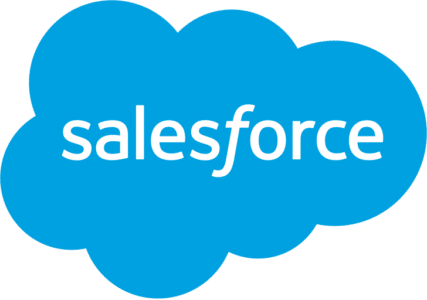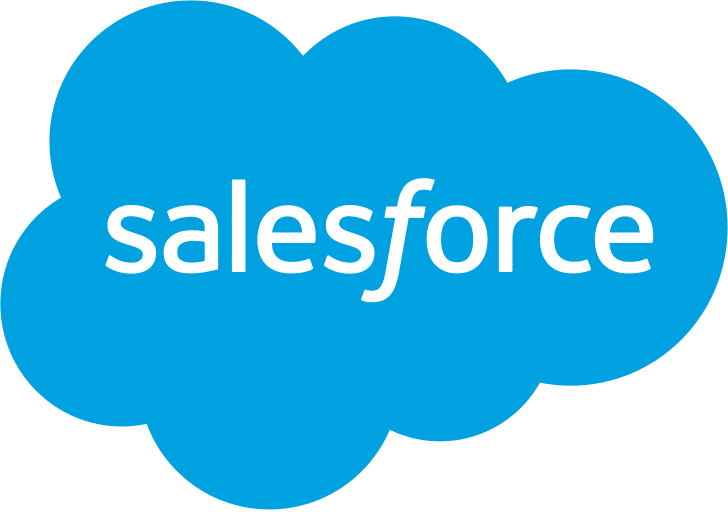

LIVE PANEL SUMMARY
Redefining the utilities customer experience
The utilities sector is undergoing a time of turbulence, meaning that it’s never been more important to ensure that customer communication strategies are robust yet flexible to meet the demands of a fast-changing world. From climate change to fuel poverty, sustainability to new competition, utilities companies are being challenged in new ways. And, as panellists on the recent MarketforceLive webinar Redefining the utilities customer experience highlighted, it is customers themselves, in their changing expectations and behaviours, that are forcing utilities to address long-standing barriers and really up their customer experience game.
“We have seen five years of digital transformation happen in the last five months. There’s been a huge acceleration in terms of how companies connect with their customers.”
Nick Umney, Salesforce
The COVID-19 crisis, of course, has acted as an accelerant to these forces. “We have seen five years of digital transformation happen in the last five months,” noted Nick Umney, Technical Director of Salesforce. “There’s been a huge acceleration in terms of how companies connect with their customers.”
Shaunna Berendsen, Head of Innovation Engagement at Anglian Water, said the pandemic has also revealed deeper trends that could prove profound for how utilities engage with customers in the future.
“From the onset of COVID-19, we saw customers become more community-centric and there was an expectation that brands like us would do the same”
Shaunna Berendsen, Anglian Water
“From the onset of COVID-19, we saw customers become more community-centric and there was an expectation that brands like us would do the same,” said Berendsen. “They wanted to know what we would be doing to help out with customers in vulnerable circumstances, whereas before they did not want to know the ins and outs. And there was also more consciousness about their carbon and water footprint, possibly because they were more at home and more engaged with their smart meters and bills.”
Penelope Hope, Chief Commercial Officer at Rebel Energy, agreed. “One of the remarkable things about COVID-19 is that the public conscience has really woken up. From the environment to social concerns, suddenly consumers are alive to what’s going on and they want brands that are equitable, sustainable, ethical and socially minded,” said Hope. “There’s been this big awakening of consciousness that we really have to respond to.”
Building customer engagement
“Customers spend just seven minutes a year engaging with their energy supplier…We’ve put a lot of thought into thinking about the compelling reason for a customer to interact with our brand.”
Penelope Hope, Rebel Energy
This creates a groundswell of customer energy that could drive engagement and loyalty. As Penelope Hope of Rebel Energy pointed out, there isn’t actually a lot of customer experience going on in the utilities industry. “Customers spend just seven minutes a year engaging with their energy supplier,” she said. “At Rebel we have put a lot of thought into thinking about the compelling reason for a customer to interact with our brand. It’s not just about being there to fix a problem, whether that’s to get a better deal or get a boiler fixed, it’s about an emotional motivation and at Rebel, we have that with our social mission to alleviate fuel poverty.”
“The biggest challenge is earning the right to start a dialogue with consumers”
Shaunna Berendsen, Anglian Water
Shaunna Berendsen of Anglian Water said that for companies in the monopolised water industry, the biggest challenge was earning the right to start a dialogue with consumers. “People don’t have a choice about which company so you need to get people to care about a decision they didn’t make,” she said. “You need to earn the right to have that dialogue.”
She said sustainability was one issue that was opening up that dialogue. “We’ve found it’s not enough to tell people they need to reduce their water consumption, they also needed some direction in how to do that and they wanted that interaction with us,” she said. “This back and forth meant that those customers were much more engaged.”
Meeting expectations of every customer
“Customers are now asking enterprises to give the same level of personalisation as they have in their social networks but enterprises just aren’t fundamentally set up to do that”
Neil Greathead, Smart Communications
Utilities, like all industries, now face the challenge of meeting ever higher customer expectations. “Customers are now asking enterprises to give the same level of personalisation as they have in their social networks but enterprises just aren’t fundamentally set up to do that,” said Neil Greathead, Chief Customer Officer of Smart Communications.
“You need to work out who is vulnerable…This means you need excellent data, tools and process in place to make those decisions quickly.”
Penelope Hope, Rebel Energy
Part of that personalisation means using data to really understand customers. Increasingly, in a COVID-19 world, that is going to mean identifying and supporting customers who are vulnerable. “You need to work out who is vulnerable and what you’re going to do,” said Penelope Hope of Rebel Energy. “This means you need excellent data, tools and process in place to make those decisions quickly.”
She added: “Seventy-five per cent of people can be vulnerable to something and we need to be creative to meeting those needs, whether it’s using sign language in video calls for deaf customers or having customer service agents who can talk to customers in their mother tongue. You need to find creative solutions.”
Challenges and barriers
“Legacy systems are holding back the aspirations of the business…it’s difficult and complex but it is doable”
Neil Greathead, Smart Communications
There are barriers, however. The utility industry is not alone in battling long-standing legacy issues. “Legacy systems are holding back the aspirations of the business moving forward,” said Neil Greathead of Smart Communications. He acknowledges the scale and complexity of tackling legacy systems that may have built up over decades but stressed it was “doable”.
“The first thing is to stay focused on your customer, what do they want to do? Allow customer data to drive business change and make good decisions based on data,” he said. “Two, realise you don’t have to rip stuff out. There are technology pieces out there that can overlay your systems to give that good experience and act as an accelerator. And three, this really needs to be on your CEO dashboard or you will spend a lot of time feeling like you are pushing water uphill.”
“It has to come from the top”
Phil Reid, Tractebel-ENGIE
Phil Reid, Head of Buildings and Complex Structures at Tractebel-ENGIE, agreed. “It has to come from the top,” he said. “These are 20 to 30-year projects and you need that long-term strategy to come from the top along with the inspiration, creativity and drive from all tiers of the organisation to support that top down vision.”
Fostering an innovation culture
“Over the last five years there have been some enormous changes and the drive for innovation has been totally unparalleled”
Phil Reid, Tractebel-ENGIE
He added that utility companies are operating in times of unprecedented change and turbulence. “Over the last five years there have been some enormous changes and the drive for innovation has been totally unparalleled.”
He pointed out that the challenges facing the utilities industry are so huge, particularly when it comes to the three Ds of decarbonisation, decentralisation and digitisation, that the big word to focus on is “transition”.
“We cannot get to carbon neutrality in two years,” said Reid. “It’s important to be realistic in terms of investment and technology to make sure you can do this in sensible time frame.”
“Innovation does not happen by itself, sometimes you need a bit of hand holding because it can feel quite daunting”
Shaunna Berendsen, Anglian Water
For many in the utilities industry, the shift to an innovation culture can be challenging. “Innovation does not happen by itself, some times you need a bit of hand holding because it can feel quite daunting,” said Shaunna Berendsen, Head of Innovation Engagement at Anglian Water. She pointed out that the company’s employees are also its customers, making them a useful test bed for innovation. “If it works well with our employees then it may also land well with customers,” she said.
“COVID-19 forced companies to work differently…I hope we can take advantage of that adaptability and creativity as we move forward”
Neil Greathead, Smart Communications
Neil Greathead of Smart Communications pointed out that the global pandemic has acted as an accelerant when it comes to innovation and culture change. Suddenly very conservative companies were forced to operate in new ways, whether it was enabling employees to work from home, teams learning to work faster and smarter to stay on top of unprecedented call volumes or empowering customers through digital self-service. “I hope we can take advantage of that adaptability and creativity as we move forward,” he said.
PRODUCED IN PARTNERSHIP WITH
Smart Communications™ is the only provider of a customer conversations management platform. More than 500 global brands rely on Smart Communications to deliver smarter conversations across the entire lifecycle—empowering them to succeed in today’s digital-focused, customer-driven world while also simplifying processes and operating more efficiently. This is what it means to scale the conversation. Smart Communications is headquartered in the UK and serves its customers from offices located across North America, Europe, and Asia Pacific. The Smart Communications platform includes the enterprise-scale customer communications management power of SmartCOMM™, forms transformation capabilities made possible by SmartIQTM and the trade documentation expertise of SmartDX™.
SmartCOMM™ for Salesforce Energy and Utilities Solution Brief: discover how leading energy and utilities firms depend on SmartCOMM™ for Salesforce to drive information-rich, business-critical, complex documents and communications throughout the enterprise.

Salesforce Industries, formerly Vlocity, is a leading provider of industry-specific cloud and mobile software for the world’s top communications, media and entertainment, energy, utilities, insurance, health, and public sector organizations. Salesforce Industries possesses deep expertise in vertical industries, enabling organizations to digitally transform, simply and seamlessly. Leveraging industry-specific processes and data models across any channel, Salesforce Industries helps customers increase sales and digital adoption, improve service, marketing agility, and operational efficiencies.
Stay in the loop with Future of Utilities
Subscribe to our newsletter to receive news, insights and special offers.